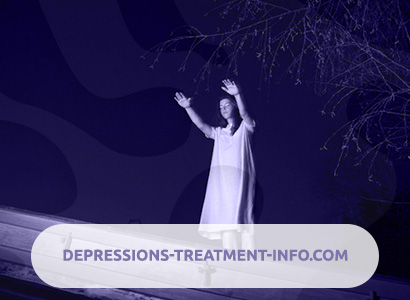What is Dissociative (Conversion) Disorders?
Dissociative (conversion) disorders (the old name is conversion hysteria) are disorders that result in partial or complete loss of conscious control over memory and sensations, on the one hand, and control of body movements on the other. Usually there is a significant degree of conscious control over memory and sensations that can be selected for immediate attention, and over the movements that need to be performed. It is assumed that in dissociative disorders this conscious and selective control is disturbed to such an extent that it can vary from day to day and even from hour to hour. The degree of loss of function under conscious control is usually difficult to assess.
The term “conversion” is widely used for some of these disorders, and implies an unpleasant affect caused by problems and conflicts that an individual cannot resolve, and transfected into symptoms. Patients with dissociative disorders usually deny problems and difficulties that are obvious to others. Any problems that are recognized by them are attributed to patients with dissociative symptoms.
Disorders are characterized by a close relationship in time with traumatic events, intractable and unbearable events or broken relationships. An increase in the number of disorders is characteristic of a period of wars and conflicts or natural disasters. They are more typical for women than for men, and for youth and adolescence, than for middle age.
The following main varieties are distinguished from dssociative disorders:
- Dissociative amnesia
- Dissociative fugue
- Dissociative fugue
- Trans and obsession
- Dissociative movement disorders
- Dissociative convulsions
- Dissociative anesthesia or loss of sensory perception
Causes of Dissociative (Conversion) Disorders
In the origin of the disorders, biological, psychological and social factors play a role:
biological factors include the value of heredity and constitutional personality traits. The transferred diseases matter, more often frustration falls on the crisis periods, age of a prepubertal and puberty, and also on the climacteric period;
psychological factors include demonstrative traits in premorbid, mental traumas and deprivations suffered in childhood, increased suggestibility and sexual disharmonies of a married couple. In addition, the psychology of dissociative disorders includes the mechanism of conditional amenity and desirability of the symptom – a person gains some gain due to his illness. Thus, a symptom contributes, for example, to keeping a love object nearby;
social factors include dissociated upbringing, including the conflicting demands of the mother and father for the child, as well as the desire of the individual for a rental installation.
Pathogenesis during Dissociative (Conversion) Disorders
The beginning and end of dissociative states are often sudden, but they are rarely observed with the exception of specially designed modes of interaction or procedures, such as hypnosis. The change or disappearance of the dissociative state may be limited by the duration of these procedures.
All types of dissociative disorders tend to remit after a few weeks or months, especially if their occurrence was associated with a traumatic life event. Sometimes it can develop more gradually and more chronic disorders, especially paralysis and anesthesia, if the onset is associated with intractable problems or frustrated interpersonal relationships. Dissociative states that persisted for 1-2 years before going to a psychiatrist are often resistant to therapy.
Symptoms of Dissociative (Conversion) Disorders
Each of the individual disorders is characterized by its own list of clinical signs, among which the most common are partial or complete loss of memory for recent important events, accompanied by confusion, loss or sharp decrease in voluntary movements, loss of sensations and sensory perception, loss of a sense of personal identity and awareness of the environment.
Diagnosis of Dissociative (Conversion) Disorders
For a reliable diagnosis should be:
- the presence of clinical signs set forth for individual disorders;
- the absence of any physical or neurological impairment with which the identified symptoms could be associated;
- the presence of psychogenic conditionality in the form of a clear connection with time with stressful events or problems or a broken relationship (even if it is denied to the sick).
Convincing evidence of psychological conditioning can be difficult to find, even if they are reasonably suspected. In the presence of known disorders of the central or peripheral nervous system, the diagnosis of dissociative disorder must be established with great care. In the absence of data on psychological conditioning, the diagnosis should be temporary, and the study of the physical and psychological aspects should continue.
It should be noted that all disorders of this rubric during their persistence, lack of connection with psychogenic influences, compliance with the characteristics of “catatonia under the mask of hysteria” (persistent mutism, stupor), identifying signs of increasing asthenia and / or personality changes of schizoid type should be classified within the pseudo-psychopathic (psychopathic) schizophrenia.
Differential diagnosis: Dissociative disorders must be distinguished from many somatic diseases that produce similar symptoms. Sometimes an unrecognized somatic disease can be a source of a nonspecific stimulus for the development of a dissociative disorder.
Depersonalization and derealization are not included here, since they usually violate only limited aspects of personal identity, and there is no loss of productivity in sensations, memory or movements.
Treatment of Dissociative (Conversion) Disorders
Treatment of dissociative disorders should be complex, including both psychotherapy and pharmacotherapy, in fact psychotherapy and pharmacotherapy in many cases occupy an equal place in the correction of disorders. Unlike some types of psychotherapy (cognitive, behavioral), psychopharmacotherapy has a predominantly symptomatic, partly pathogenetic, but not etiotropic effect. At the same time, a transient medicinal improvement may turn into stable remission due to the therapeutic effect of the time factor. Pharmacotherapy of disorders includes all classes of psychopharmacological agents – neuroleptics, tranquilizers, antidepressants, psychostimulants, nootropics, timoleptics. The most widely used are tranquilizers and antidepressants, which divide the first and second places by significance among the classes of psychopharmacological agents in the treatment of dissociative disorders.
 What are Social Phobias?
What are Social Phobias?
